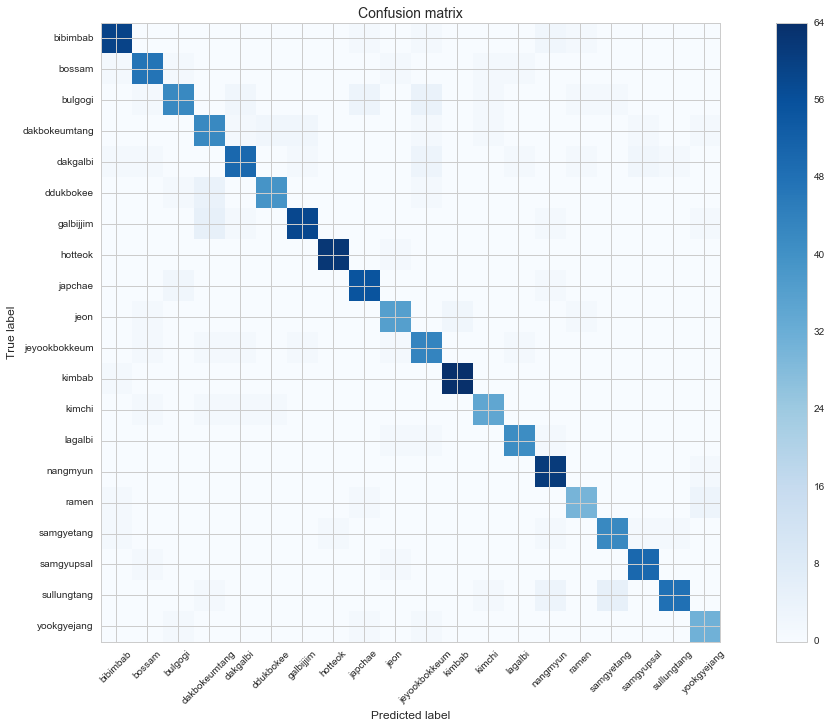Creating a machine learning model to recognize Korean foods in photos using Google's Inception-v3 Convolutional Neural Network to generate and analyze deep features.
The resulting TensorFlow model was used to develop a Django web server and an Android app that can send photos of Korean food to the web server and receives back the classification label.
- TensorFlow v6.0
- Datsci - my personal library used for data science-related projects
- jupyter==1.0.0
- matplotlib==1.5.1
- MetaMindApi==1.2.2
- numpy==1.10.4
- pandas==0.17.1
- Pillow==3.1.0
- prettytable==0.7.2
- scikit-learn==0.17.1
- scipy==0.17.0
- seaborn==0.7.0
3,470 photos of 20 Korean dishes were used for this project.
| Name | Number of samples |
|---|---|
| galbijjim | 219 |
| kimbab | 217 |
| bibimbab | 214 |
| hotteok | 210 |
| nangmyun | 207 |
| dakgalbi | 205 |
| sullungtang | 193 |
| japchae | 193 |
| bulgogi | 183 |
| samgyupsal | 173 |
| bossam | 173 |
| dakbokeumtang | 171 |
| jeyookbokkeum | 165 |
| samgyetang | 158 |
| ddukbokee | 150 |
| lagalbi | 148 |
| jeon | 134 |
| kimchi | 127 |
| ramen | 118 |
| yookgyejang | 112 |
For transfer learning, TensorFlow was used to retrain the Inception-v3 network's final layer.



